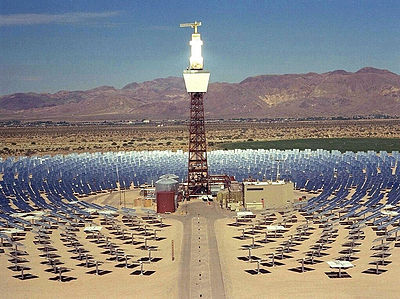By Sean Buchanan | –
ROME, Mar 31 2015 (IPS) – Driven by solar and wind, world investments in renewable energy reversed a two-year dip last year, brushing aside the challenge from sharply lower oil prices and registering a 17 percent leap over the previous year to stand at 270 billion dollars.
These investments helped see an additional 103Gw of generating capacity – roughly that of all U.S. nuclear plants combined –around the world, making 2014 the best year ever for newly-installed capacity, according to the 9th annual “Global Trends in Renewable Energy Investments” report from the U.N. Environment Programme (UNEP) released Mar. 31.
Prepared by the Frankfurt School-UNEP Collaborating Centre and Bloomberg New Energy Finance, the report says that a continuing sharp decline in technology costs – particularly in solar but also in wind – means that every dollar invested in renewable energy bought significantly more generating capacity in 2014.
In what was called “a year of eye-catching steps forward for renewable energy”, the report notes that wind, solar, biomass and waste-to-power, geothermal, small hydro and marine power contributed an estimated 9.1 percent of world electricity generation in 2014, up from 8.5 percent in 2013.
This, says the report, means that the world’s electricity systems emitted 1.3 gigatonnes of CO2 – roughly twice the emissions of the world’s airline industry – less than it would have if that 9.1 percent had been produced by the same fossil-dominated mix generating the other 90.9 percent of world power.
“Once again in 2014, renewables made up nearly half of the net power capacity added worldwide,” said Achim Steiner, Executive Director of UNEP. “These climate-friendly energy technologies are now an indispensable component of the global energy mix and their importance will only increase as markets mature, technology prices continue to fall and the need to rein in carbon emissions becomes ever more urgent.”
China saw by far the biggest renewable energy investments last year – a record 83.3 billion dollars, up 39 percent from 2013. The United States was second at 38.3 billion dollars, up seven percent on the year (although below its all-time high reached in 2011). Third came Japan at 35.7 billion dollars, 10 percent higher than in 2013 and its biggest total ever.
According to the report, a prominent feature of 2014 was the rapid expansion of renewables into new markets in developing countries, where investments jumped 36 percent to 131.3 billion dollars. China with 83.3 billion, Brazil (7.6 billion), India (7.4 billion) and South Africa (5.5 billion) were all in the top 10 investing countries, while more than one billion dollars was invested in Indonesia, Chile, Mexico, Kenya and Turkey.
Although 2014 was said to be a turnaround year for renewables after two years of shrinkage, multiple challenges remain in the form of policy uncertainty, structural issues in the electricity system and even the very nature of wind and solar generation which are dependent on breeze and sunlight.
Another challenge, says the report, is the impact of the more than 50 percent collapse in oil prices in the second half of last year. However, according to Udo Steffens, President of the Frankfurt School of Finance and Management, the price of oil is only likely to dampen investor confidence in parts of the sector, such as solar in oil-exporting countries and biofuels in most parts of the world.
“Oil and renewables do not directly compete for power investment dollars,” said Steffens. “Wind and solar sectors should be able to carry on flourishing, particularly if they continue to cut costs per MWh. Their long-term story is just more convincing.”
Of greater concern is the erosion of investor confidence caused by increasing uncertainty surrounding government support policies for renewables.
“Europe was the first mover in clean energy, but it is still in a process of restructuring those early support mechanisms,” according to Michael Liebreich, Chairman of the Advisory Board for Bloomberg New Energy Finance. “In the United Kingdom and Germany we are seeing a move away from feed-in tariffs and green certificates, towards reverse auctions and subsidy caps, aimed at capping the cost of the transition to consumers.
“Southern Europe is still almost a no-go area for investors because of retroactive policy changes, most recently those affecting solar farms in Italy. In the United States there is uncertainty over the future of the Production Tax Credit for wind, but costs are now so low that the sector is more insulated than in the past. Meanwhile the rooftop solar sector is becoming unstoppable.”
A media release announcing publication of the UNEP report said that if the positive investment trends of 2014 are to continue, “it is increasingly clear that major electricity market reforms will be needed of the sort that Germany is now attempting with its Energiewende [energy transition].”
The structural challenges to be overcome are not simple,” it added, “but are of the sort that have only arisen because of the very success of renewables and their over two trillion dollars of investment mobilised since 2004.”
Edited by Phil Harris
Licensed from IPS




 © 2025 All Rights Reserved
© 2025 All Rights Reserved